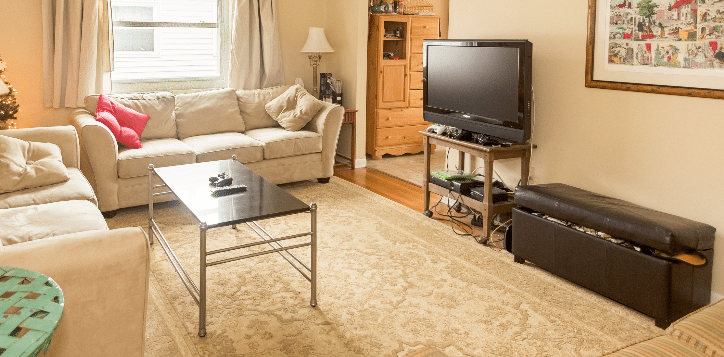How To Make All The Rooms In Your NC Home Stay The Same Temperature
Now is the time to minimize the operational cost for running the HVAC equipment in your regional Raleigh home. It’s as simple as reducing energy consumption by effective regulation of dampers, registers and airflow. It’s as complex as eliminating leaks in the ductwork, cleaning the filters, and sealing household leaks around doors and windows. It may even involve resizing your Raleigh air conditioning system.
You notice the problem because some rooms get too cold, others get too hot and some perfectly fit your expectations. Some of the solutions are obvious. If high trees shade the eastern side of your Raleigh home yet the noon- thru-evening sun bakes the bedroom on the western side, expect a buildup of heat in the bedroom. If you also leave the blinds up in the bedroom, expect those scorching sunbeams to pump up lots of excess heat in the exposed rooms. Heavy curtains or closed blinds are the only good defense against this type of extreme heat exposure. In the winter, reverse the process and let the light shine in.
But not all fixes are so simple and obvious. Here are five Raleigh HVAC tips on how to better balance your home’s central cooling and heating system.
1) Seal all Leaks
- Start by caulking any air leaks around the doors or windows of your home.
- Locate your central air handler system. Not: some Raleigh homes use more than one air conditioning system.
- Set the internal thermostat to manual, always on airflow.
- Examine the ductwork for leaks in the seams or tears in the coils.
- Caulk and then tape any discovered leaks.
2) Regulate the Dampers
- Stop by the local hardware store and pickup enough low-cost portable room thermometers as is suitable to the rooms in your home. Average cost is less than $9 each.
- Locate your central air handler.
- Tracking from the unit, follow each duct, keeping watch for any damper controls. These handles are clearly visible on the outside of the duct systems.
- Adjust every damper control so that it points parallel with the direction in which the duct runs.
3) Adjust the Inside Registers
- In the house, locate each room that contains an airflow register
- Place one thermometer in each room at about one foot above floor level. Be sure the thermometer is not in direct line with the airflow discharge from the register. Also stay clear of the airflow return register.
- Open the registers to full discharge. The flaps in the register should be at full vertical.
4) Balance AC Room Temperatures
- If this is during the winter, turn on the heat. If summer, turn on the cool. Wait an hour, and then check the readings at each portable thermometer.
- Starting with the hottest room (coldest in summer), close the damper by one-third of the overall movement capacity. Do the same for any rooms with a similar excessive reading.
- Wait another hour. Repeat the adjustment process until the temperature balance in each room suits your personal comfort level.
5) Fine Tune Balance Using The Air Distribution Registers
Once you have made the best use of the ductwork embedded damper system, continue balancing room temperatures by making fine adjustment to the air distribution registers. Follow the same principles and pattern as you used on the damper system.
Hiring Professional NC Heating and Cooling Services
Caulking doors and windows may require the skills of a local Raleigh handyperson. Adjusting the inside airflow registers is rather easy and can typically be handled by the homeowner. However, when it comes to caulking A/C ductwork and adjusting the dampers, many homeowners prefer to shift this task into the hands of a professional NC heating and cooling company.
Family owned Delta Heating & Cooling wants to help you with that job. The company provides quality HVAC services throughout Raleigh, NC and the surrounding areas. Get the best in residential heating and air conditioning sales, installation, and maintenance. You can rely on Delta for all of your regional Raleigh HVAC needs.

